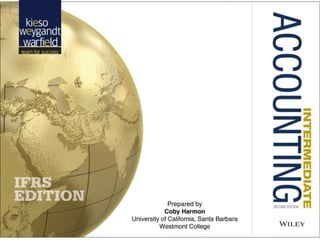The document provides an overview and learning objectives for a chapter on the conceptual framework for financial reporting. It discusses the need for a conceptual framework to establish consistent concepts to underlie financial reporting standards. It describes efforts to construct a conceptual framework, which comprises chapters on the objective of financial reporting, qualitative characteristics of accounting information, and basic concepts related to recognition, measurement and disclosure. The chapter objectives cover understanding the usefulness of the conceptual framework, its development, the financial reporting objective, qualitative characteristics, basic elements of financial statements, accounting assumptions, and how the cost constraint affects reporting.






























































